Over time, R.A. Dickey has become one with his knuckleball -- an elusive, baffling jewel that has cast its master into the national spotlight despite being an endangered baseball species.
Mastering the pitch has become so much of a lost art that Dickey contemplates whether the craft of making a living off it has knuckleball disciples teetering on extinction.
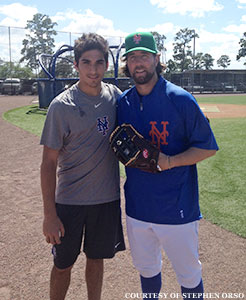
So when Stephen Orso, a 18-year-old Long Island native, sought out Dickey this spring -- the same way the 37-year-old New York Mets ace had with Phil Niekro, Charlie Hough and Tim Wakefield in 2005 when he started throwing the knuckleball -- the initial reaction was to be grateful.
But that's when the reality of the request sunk in.
If a kid believed to be the only high schooler in the country consistently throwing a knuckleball was seeking Dickey for guidance on a pitch no one has completely perfected, there had to be a reason.
"It probably means that you're one of the last ones left -- if not the last one left," Dickey says in a phone interview with ThePostGame.com, a day after becoming the first major leaguer since 1944 to throw back-to-back one hitters. "That's who I am.
"So (for someone to seek him out) is nice, but it also means you're lonely. You're by yourself to some degree."
Orso, for one, hopes to change that one knuckleball at a time.
Orso will begin his college baseball career in the fall at University of Maryland -- a competitive plateau the New York teenager says he would have never reached without a knuckleball.
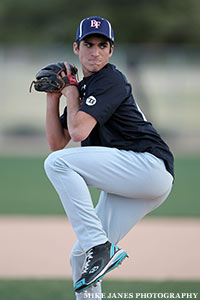
Pre-knuckleball, Orso was, by his own admission, a "very average" run-of-the-mill high school pitcher whose fastball topped out at 84 mph.
He had an ordinary arsenal -- fastball, slider, change-up and an occasional curveball -- a skill set that by itself would likely keep Orso's arm from reaching anywhere beyond high school.
The knuckleball had been something Orso, like every pitcher on the planet, had messed around with from time to time.
He often experimented with Wakefield's version of the pitch in leisurely video game sessions, using the controller and his imagination to virtually bewilder one big leaguer after another.
But not only throwing a knuckleball himself, but mastering the pitch enough to get him noticed by professional scouts would be a completely different proposition.
Knuckleballers have always been an oddity in baseball, making those who threw it -- and threw it well -- the Niekros, the Hoyt Wilhelms, the Wakefields and the Dickeys -- a unique breed.
Even more rare was a pitcher who discovered the pitch on a full-time basis in high school, choosing to lock in on a pitch that Phil Niekro recently told The New York Times he was still trying to figure out when his career ended.
"It's really rare -- it's one of those once-in-a-decade type things," says Maryland baseball coach Erik Bakich, who recruited and coached Tampa Bay Rays' 2010 Cy Young runner-up David Price at Vanderbilt. "So to have that as a weapon for a high school player or a college player, I think there's some advantage to that.

"It's a special pitch."
Despite the rarity, throwing a knuckleball for some reason seemed oddly comfortable to Orso.
He couldn't figure out why. Maybe it was just the way he could get his arm seemed to naturally land when he threw it or the way he could get the ball to move mysteriously, with knuckleballs dancing in and out of the strike zone.
One thing was certain. Orso was going to go out on a limb, against the wishes of his high school coaches who told him not to waste his time with a knuckleball.
"For me, it seemed easy," Orso says. "For others, it's probably not so easy, but it just came natural. But I would have never thrown it again if it didn't work the first time."
Convincing his coaches he could throw the pitch consistently for strikes didn't come as easy.
After experimenting with his knuckleball as a freshman, Orso was throwing it on nearly a full-time basis by the start of his senior year. By the time he became comfortable throwing the pitch, Orso discovered he had more command of the knuckleball than he did his fastball.
Orso's coaches made him throw a bullpen session full of knuckleballs to prove he was ready to move forward with the pitch as quickly as he wanted.

Over time, the pitch became more and more effective, consistently finding the strike zone and confusing opposing hitters. The pitch put Orso on the baseball map, earning him invitations to showcases like last winter's Under Armour Pre-Season All-America Tournament in Arizona.
His knuckleball was making Orso a known commodity.
But it wasn't until he met Dickey, connected through a mutual friend of Orso's father, when everything started to click.
The two met on an out-of-the-way field at the Mets' spring training facility in Florida. For 30 minutes, Dickey preached technique and form, using the image of an invisible doorframe to illustrate to Orso the way his body had to behave if his knuckleball had any chance of having an impact.
The two worked to reduce the spin on Orso's knuckleball, which, despite its rawness, had potential.
For Orso's sake, it had to.
For Dickey, who made a switch to the knuckleball under former Cy Young winner and Texas Rangers' pitching coach Orel Hershiser, transitioning to throwing this pitch was an act of desperation.
Since then, Dickey has forged on, despite missing the ulnar collateral ligament in his elbow, mastering a knuckleball that he has had come to live with, accepting both the good and the bad.
"You're going to struggle with it and a lot of guys don't have the stomach for it," Dickey says. "For me, I have a real relationship with it -- it's one that can be capricious and fickle, but it can also be sweet and good and beautiful."
For Orso, the knuckleball also offered a dose of salvation. As the great knuckleballers of the past had been for Dickey, passing along some of his knowledge as Orso's agent of change would be Dickey's way of giving back.
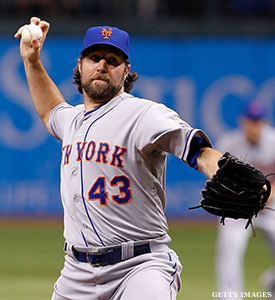
"If it wasn't for him," Orso says, "I wouldn't be able to throw it as effective as I can now."
The spring training meeting provided Dickey not only with a willing participant but an eager student.
At first glance, Orso was about what Dickey expected -- a young, raw pitcher that threw more of a hard forkball than a true knuckleball. When Orso threw, Dickey witnessed a ball that knuckled, but not nearly enough in a way that would fool hitters the way the pitch intended.
But Dickey also saw some potential in the knuckleballing neophyte. He saw the makings of someone who, if brought along the right way and who was given the latitude to explore the knuckleball in its proper context, could have a future with the pitch.
But the teaching session also came with a warning: Attempting to master the knuckleball isn't for everyone.
Early on, Dickey -- who leads the majors with 11 victories, ERA (2.00) and whose 100 strikeouts sits only behind Detroit's Justin Verlander -- spent countless hours working on the pitch. He threw thousands of knuckleballs against a wall in his uncle's gym in Nashville.
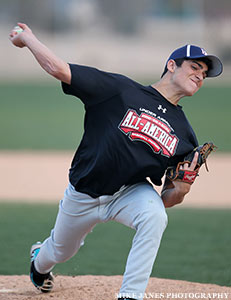
But making the knuckleball a "relational pitch," Dickey says, requires patience and perseverance. Many young pitchers or front office executives aren't often willing to sacrifice that time.
Especially in a baseball generation of fire-ballers pushing triple digits on the radar gun.
"There's not many scouts going out looking for the next R.A. Dickey," Dickey says. "They're going out looking for the next Stephen Strasburg or Verlander -- the guys that are throwing 100.
"So in order to get (to the majors) it either takes knowing somebody or just a crazy, crazy knuckleball."
It's a pursuit that Orso is willing to chase, understanding that he's following the path to professional baseball that has historically been less traveled.
Later this summer, he will travel to southern California, where he will work out with Charlie Hough, who was part of Dickey's consultants. He is prepared to take the good with the bad as Dickey has en route to a season that has been the culmination of hard work.
Orso knows there will be struggles, but he also believes that by following the lead of Dickey -- they occasionally trade texts messages to talk shop -- he can make a go of it. After meeting with Dickey in March, Orso spent the next two months at home, throwing one knuckleball after another. He was following the lead of a newfound mentor whose knuckleball this season has produced the fruit Dickey always believed was possible.
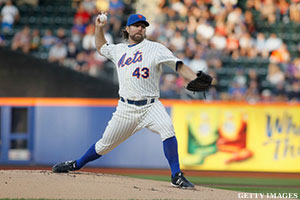
It's a bumpy road, Orso says, but he is willing to endure if it means one day realizing his big league dreams.
"It's hard to go against the grain," Orso says. "You have to fight through it, and you have to keep working to prove people wrong."
If anything, the run Dickey has been on this season has again put the knuckleball into baseball's mainstream conversation. For Dickey, the road to the top has been a long one.
While his recent string of 32 2/3 scoreless innings has grabbed national headlines, he's also quick to point out that, at times in the past, his knuckleball has been more rebellious.
Dickey still shares the modern-day record with Wakefield for home runs given up in a single game along with most wild pitches thrown in one inning.
But because of his ability to dream big, Dickey doesn't consider himself in the midst of a magical season, but one in which everything has seemingly comes together in a way it never has before.
Dickey hopes this is just the beginning and that his knuckleball carries him into his 40s like it did for Phil Niekro, who retired at age 48.
Although there aren't many pitchers like him who are banking their futures on a knuckleball, Dickey hopes he's not the last.
If Stephen Orso has anything to say about it, Dickey won't be part of a lost breed, but instead, someone who inspires a kid dreaming of being baseball's next great knuckleballer.
If Dickey can be the one that helps him get there, so be it.
"There's not many of us and there may not be ever be any of us," Dickey says. "I certainly hope to change the perception as best as I can, but that's up to other people to decide."
-- Email Jeff Arnold at jeff.arnold@thepostgame.com and follow him on Twitter @jeff_arnold24.









